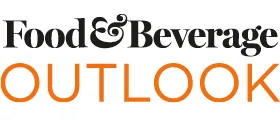As the popularity of no and low-alcohol beverages continues to grow across the US, businesses consider the benefits of monopolizing this fast-expanding market.
In recent years, the US and much of Europe have noted the rise of the no and low-alcohol drinks category, which has been forecast to continue at a compound annual growth rate (CAGR) of six percent between 2023 and 2027 across the world’s leading markets.
Non-alcoholic beer is the main driving force behind this marked growth in the US, with well-known brands such as BrewDog, Brooklyn Brewery, and Guinness producing non-alcoholic products that closely emulate their alcoholic counterparts.
At the same time, exclusive no and low-alcohol brands such as Athletic Brewing Co, Lucky Saint, and Partake have monopolized this emerging market.
An existing and well-established ready-to-drink (RTD) category in the US means that the practicalities of replacing alcohol with no and low-alcohol alternatives have been relatively straightforward, as consumers don’t generally require a major lifestyle change to lower their alcohol intake.
Celebrity endorsements from the likes of Blake Lively, Katy Perry, and Bella Hadid have also been attributed to the rise, as have trends such as Dry January and Sober October, campaigns which make quitting alcohol more accessible and socially accepted.
Of course, traditional beers and spirits still occupy the largest section of the US alcoholic beverages market, with a notable rise in alcoholic RTDs boosting the sector of late.
However, the possibility of the potential health and lifestyle benefits of no and low-alcohol alternatives outweighing those of alcoholic beverages is becoming increasingly feasible.
As such, the upward trajectory of this previously underrepresented industry is expected to continue.
NEW BE-GIN-NINGS
In addition to being slightly more affordable than their alcoholic equivalents, choosing non-alcoholic and soft beverages presents multiple proven health benefits.
For example, a month of not drinking is reported to improve sleep quality and increase hydration levels, contributing to improved mood and concentration.
Reducing alcohol intake has also been linked to healthier skin and hair due to increased hydration levels. A healthier liver will also give consumers’ bodies a better chance of removing contaminants, converting food nutrients, and storing minerals and vitamins.
Furthermore, blood pressure and cholesterol levels drop, minimizing the risk of heart disease, whilst reduced calories contribute to a faster metabolism and easier weight loss.
It’s no wonder, then, that so many are increasingly choosing a teetotal lifestyle over traditional tipples.
In this way, it’s important that businesses and brands pay attention to emerging trends in the no and low-alcohol market to ensure they remain competitive. The likes of Kin Euphorics, endorsed by Bella Hadid, and TRIP, a leading CBD drinks brand, have done just this by offering health-oriented alternatives to alcoholic beverages.
Centered around the idea of a functional beverage, Kin Euphorics is a sparkling water wellness drink designed using ingredients such as adaptogens, nootropics, and botanicas to nourish the mind and body.
TRIP drinks, which originated in Europe, are a gluten-free, vegan, low-calorie, and CBD-infused RTD option. The company’s branding is centered around healthy, happy relaxation.
As such, brands across the US are increasingly paying attention to the rise in demand for healthy alternatives to alcoholic beverages, and those that monopolize the wellness market will be well placed to benefit going forward.
UN-WINE-DING AFFORDABILITY
Despite the relative affordability of non-alcoholic beverages in comparison to their alcoholic counterparts, many no and low-alcohol brands have reported instances of customers complaining about these drinks not being marketed at the same price as soft drinks, such as juices or lemonade.
However, the manufacturing process, the quality of the ingredients used, and rising demand all combine to determine the price of no and low-alcohol products.
Non-alcoholic wine, for example, in addition to typically following the same steps as traditional wine manufacturing, must go through an additional process known as vacuum distillation, which uses heat to evaporate alcohol in the wine.
This is a refined skill, as the wine must be boiled in a way that doesn’t impact the overall flavor, whilst ensuring the final product contains the least amount of alcohol possible.
Therefore, the additional steps required to achieve non-alcoholic wine, coupled with the skilled personnel required to carry out vacuum distillation, make it unfeasible for brands to offer the beverage at a significantly lower price than its alcoholic equivalent.
Similarly, no and low-alcohol beer is more expensive to make than mass-produced drinks. This is generally due to high-quality ingredients, a complex manufacturing process, and typically smaller production plants driving up the cost.
Alcohol-free spirits are yet to be widely mass-produced, as recreating the flavor profiles of traditionally alcoholic spirits, especially those designed to be consumed ‘neat’ such as whiskey, has historically proven difficult.
However, brands such as Lyre’s and Seedlip have emerged as non-alcoholic spirits producers in their own right, whose products are priced on average around $30 per 700 milliliter (ml) bottle, whilst well-known alcoholic spirits brands such as Gordon’s and Captain Morgan have recently joined the non-alcoholic movement, marketing their products at a similar price.
Based on the success of such brands, combined with a growing demand for non-alcoholic alternatives across the US, businesses can certainly anticipate less market resistance towards no and low-alcohol beverages that are priced in line with their alcoholic counterparts.
THE US NO AND LOW-ALCOHOL MARKET – KEY STATISTICS
- The no and low-alcohol market in the US continues to grow, following a notable CAGR of 25 percent between 2019 and 2023, which is forecast to continue to grow between now and 2027.
- Consumers of no and low-alcohol beverages in the US tend to be younger and more likely to moderate alcohol intake than older cohorts, fueling the strong forecast.
- The no-alcohol market in the US is now worth over $1.8 billion.



























